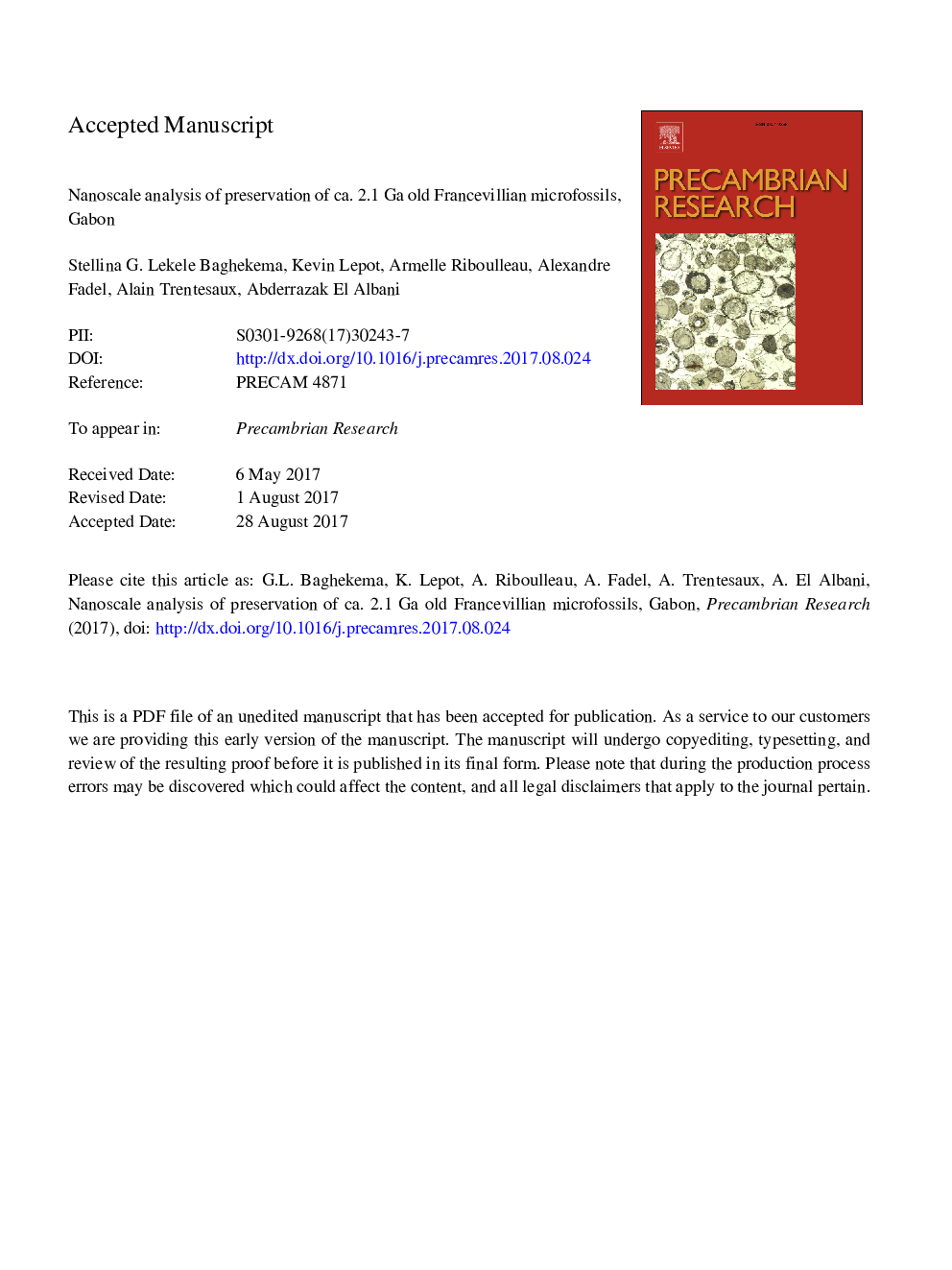| کد مقاله | کد نشریه | سال انتشار | مقاله انگلیسی | نسخه تمام متن |
|---|---|---|---|---|
| 5784663 | 1639574 | 2017 | 50 صفحه PDF | دانلود رایگان |
عنوان انگلیسی مقاله ISI
Nanoscale analysis of preservation of ca. 2.1Â Ga old Francevillian microfossils, Gabon
دانلود مقاله + سفارش ترجمه
دانلود مقاله ISI انگلیسی
رایگان برای ایرانیان
موضوعات مرتبط
مهندسی و علوم پایه
علوم زمین و سیارات
ژئوشیمی و پترولوژی
پیش نمایش صفحه اول مقاله

چکیده انگلیسی
The FC Formation of the Francevillian of Gabon displays the oldest Gunflint-type assemblage of microfossils that is hosted in shallow-water stromatolites. The FC Formation was deposited between 2.14 and 2.08 billion years ago (Ga), after the Great Oxygenation Event (â¼2.4-2.3 Ga) and near the end of the Lomagundi event (â¼2.3-2.06 Ga). Although they have been used as a benchmark for the search for older microfossils, the nature of Gunflint-type microfossils has remained elusive due to their simple shapes, their small sizes, and their alteration. Here, we report the first nanoscale study of Francevillian Gunflint-type microfossils. We used a combination of Raman spectroscopy, palynology, in situ focused ion beam sectioning, and analytical electron microscopy. In spite of the relatively high thermal maturity of organic matter (inferred peak burial temperature â¼296 ± 30 °C), spherical cell walls (Huroniospora) and filamentous sheaths (Gunflintia minuta: â¤3 µm in diameter, and broader filaments) are preserved. Organic matter in/on cell walls and sheaths, is associated with nanocrystalline quartz, whereas coarser quartz crystals fill and surround the microfossils. This pattern, likely inherited from recrystallization of texturally heterogenous opal generations, could have allowed the observed preservation of organic structures and limited migrations of organic matter. Moreover, we demonstrate the preservation of thick-sheathed broad (>3 µm) filaments for the first time in a stromatolitic Gunflint-type assemblage; such thick sheaths are common in cyanobacteria, but not in other filamentous bacteria. We distinguished two types of star-shaped organic microstructures (Eoastrion) but found no diagnostic evidence for/against a microfossil nature at the nanoscale. Furthermore, we show that titanium is commonly associated with organic structures of microfossils, likely as a result of diagenetic mineralization. In contrast, iron-rich nanocrystals associated with microfossils occur in quartz, not in organic matter, and could possibly represent recrystallized biominerals.
ناشر
Database: Elsevier - ScienceDirect (ساینس دایرکت)
Journal: Precambrian Research - Volume 301, October 2017, Pages 1-18
Journal: Precambrian Research - Volume 301, October 2017, Pages 1-18
نویسندگان
Stellina G. Lekele Baghekema, Kevin Lepot, Armelle Riboulleau, Alexandre Fadel, Alain Trentesaux, Abderrazak El Albani,